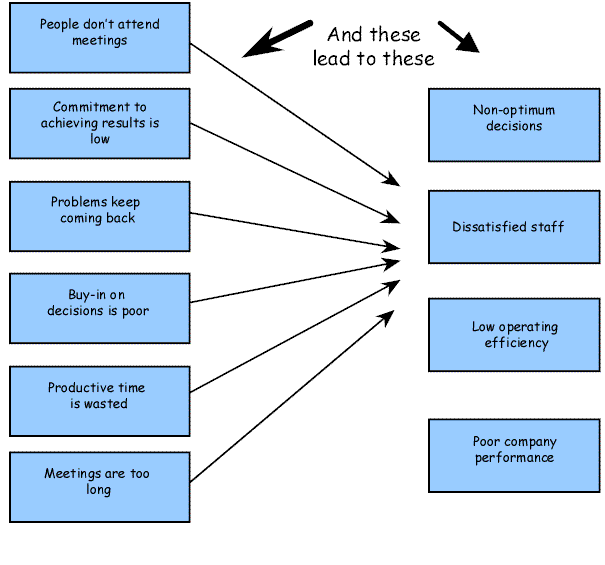|
The
idea of 'causes and effects' is easier to understand in the form of a
diagram. A simple analysis is represented below. The problems listed on
the left can be thought of as being causes of the 'core problem' and that
core problem can be considered as having the effects listed on the right
of the diagram. 
The major contributing factors
to inefficient meetings (excluding for the moment, the issue of
"human behavior") are:
-
meetings are
sometimes used when
they are not appropriate
-
the planning for the meeting is inadequate
-
the level of communication is poor
-
no visual record is made of the discussion as it proceeds
-
there is biased or inadequate control over "who speaks next"
-
there are few mechanisms available to resolve differences of opinion
-
there is no mechanism for adjusting the "rules of play"
Return
to top of page
Causes
Effects and Cures The
previous cause effect diagram shows
a list of effects. These effects can themselves have "knock-on" effects. The diagram
below shows some possible "second level" effects. They are;
non-optimum decisions, dissatisfied staff, low operating efficiency, poor
company performance. The reasoning is, if we wish to avoid the consequences
just listed we should "trace back" the cause - effect chain and
apply "curative measures" to the root causes. In the case used in
this example the "cure" is to improve the efficiency of meetings.
Return
to top of page

Return
to top of page
The cause effect analysis
we have just seen is an example of the use of one of the analytical processes. |